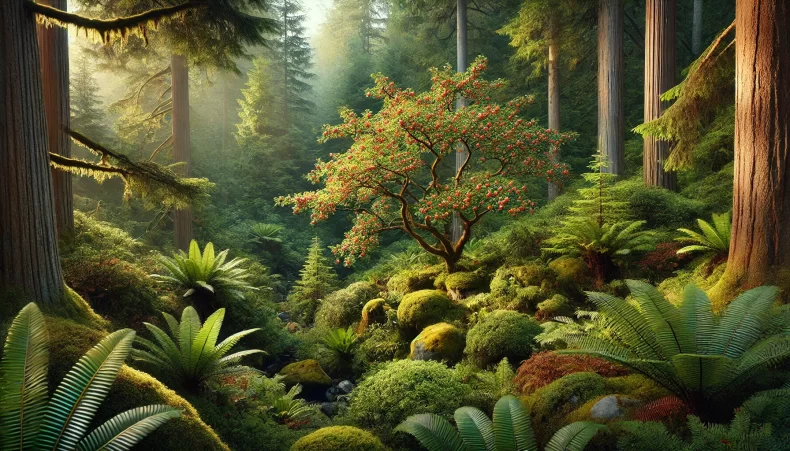
I could never hack it as a farmer, and the thought of living as a hunter-gatherer evokes for me the feeling of being locked out of your house. But in the ancient and abandoned indigenous villages on the coast of British Columbia, there was a mode of food cultivation that really strikes a chord with me: the forest garden.
Next to archeological village sites that, until 150 years ago, were continuously occupied for at least 2,000 years, paleobotanist Chelsey Geralda Armstrong and others have found patches of forest where the plants were transplanted from distant sites and selectively managed.
Hazelnuts only grow at these sites and would have been brought in from far in the East. Crab apples native to the intertidal would have been brought in from the West. The plants were also selected for larger fruits (as evidenced by larger seeds), and the ground around the plants was cleared, likely by the children of the village (as suggested by elders’ memories). There’s a suite of about a dozen plants that are consistently found together and offer a good complement to the fish-dominated diet of the area.
I just love the thought of having a secret clearing in the woods that my village uses as a living larder. The density of different plant species is still larger in these patches than the forest around them, and that mirrors the fact that areas long occupied by traditional societies in the Americas consistently show more biodiversity, as opposed to less over time. The animals know it too—hunters talk of finding the best game around ancient village sites—finding the larder too tempting not to raid.
Like those towns built into cliff faces, this is a built environment that blends seamlessly into the natural one and enriches it. We may need to rediscover a model like this if we’re to survive long term. And when we do, along with the harmonious cultivation and nourishment, we’ll be rediscovering something even more special: a little bit of dappled magic.
Image: Dall-e
First time I’ve noticed an “AI” image on a LWON post, and very disappointed to see it. I would much rather see no image, than one based on stolen work and environmental destruction. I thought a blog that’s pro science, truth, and reality would be opposed to a technology used to lie and confabulate.
I agree with you about the AI image, but 1) the author clearly attributes it so no lying; 2) the author likes playing around with it so I give her all the breaks she wants.
I follow and agree with Sonia’s logic, myself. Bland and generic as most AI images look, too. Also the consumption of huge energy resources on the server farm side of things. But clearly the direction that large swaths of humankind are heading. I use AI myself, for a variety of tasks, so, not saintly in any way. Fiddling while Terra burns.
I’m always briefly amused by the AI art, but Jessa’s ideas and observations are what I lean into and am most grateful for.
I was recently offered first dibs on an off-the-grid house in this several family community that holds in common many acres of forest. It is so wooded a stretch, that in the winter everyone parks near the county road and must walk up to a mile in to where they live. While everyone’s own gardens are in the small clearings near their houses, the community ethic is that of a shared life, a shared larder.
I passed on the cabin in part because it seemed too big to link my life to the lives of a dozen people, but Jessa’s thoughts are making me reconsider. There could indeed be a sort of magic in that kind of life.